
JOURNAL OF CHILD NEUROLOGY
Scope & Guideline
Empowering Research for a Brighter Future in Child Neurology
Introduction
Aims and Scopes
- Genetic and Molecular Neurology:
Research articles frequently explore genetic mutations and their implications for various neurological disorders, such as epilepsy and muscular dystrophies, providing insights into the molecular underpinnings of these conditions. - Clinical Interventions and Treatments:
There is a strong emphasis on clinical trials and systematic reviews evaluating the efficacy of various treatments, including pharmacological and non-pharmacological therapies for conditions like migraines, epilepsy, and developmental disorders. - Neurodevelopmental Disorders:
The journal covers a significant number of studies related to neurodevelopmental disorders, including autism spectrum disorders and cerebral palsy, focusing on their diagnosis, management, and the impact of various interventions. - Neuroimaging and Diagnostic Tools:
Innovative research into neuroimaging techniques and diagnostic tools is a key area, with studies assessing the effectiveness of EEG, MRI, and other methodologies in diagnosing neurological conditions. - Public Health and Epidemiological Studies:
The journal includes epidemiological studies that assess the prevalence and risk factors of various neurological disorders in pediatric populations, contributing to public health knowledge and strategies.
Trending and Emerging
- Impact of COVID-19 on Pediatric Neurology:
There has been a marked increase in studies examining the effects of COVID-19 on neurological conditions in children, highlighting the pandemic's influence on neurological presentations and management. - Telehealth and Remote Interventions:
Research focusing on telehealth and remote therapy interventions has surged, especially in response to the COVID-19 pandemic, showcasing the evolving landscape of healthcare delivery in pediatric neurology. - Interdisciplinary Approaches to Treatment:
Emerging studies emphasize the importance of interdisciplinary approaches that combine occupational therapy, speech therapy, and pharmacological treatments, reflecting a holistic view of pediatric care. - Nutritional and Lifestyle Interventions:
There is a growing trend in exploring the roles of nutrition and lifestyle changes in managing pediatric neurological disorders, such as the impact of vitamin D and probiotics on conditions like migraines and autism. - Advancements in Genetic Testing and Personalized Medicine:
Research into genetic testing and personalized medicine is gaining traction, with a focus on tailoring interventions based on genetic profiles, enhancing the precision of treatments for various neurological disorders.
Declining or Waning
- Traditional Pharmacological Approaches for ADHD:
Research on conventional pharmacological treatments for Attention-Deficit/Hyperactivity Disorder (ADHD) has shown a decline, possibly as interest grows in alternative therapy approaches and behavioral interventions. - Case Reports of Rare Neurological Conditions:
The frequency of case reports detailing rare neurological conditions appears to be decreasing, possibly due to a shift towards larger cohort studies and clinical trials that provide more generalizable data. - Longitudinal Studies on Pediatric Epilepsy Outcomes:
The number of longitudinal studies focusing solely on pediatric epilepsy outcomes has diminished, as researchers increasingly favor cross-sectional studies and randomized controlled trials that deliver quicker results.
Similar Journals
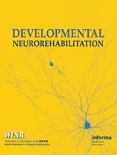
Developmental Neurorehabilitation
Catalyzing breakthroughs in neurorehabilitation for children.Developmental Neurorehabilitation is an esteemed journal published by Taylor & Francis Inc, dedicated to advancing the field of developmental neuroscience and rehabilitation. With an ISSN of 1751-8423 and an E-ISSN of 1751-8431, this journal serves as a vital resource for researchers, clinicians, and students interested in innovative therapeutic approaches and rehabilitation techniques for children and adolescents. Since its inception in 1997, Developmental Neurorehabilitation has focused on disseminating high-quality research, contributing to a deeper understanding of recovery processes in developmental disorders, and facilitating interdisciplinary dialogue among professionals. With its recognition in Q2 and Q3 quartiles across prominent categories such as Pediatrics and Rehabilitation, it stands out as a pivotal publication in its field, boasting Scopus rankings that reflect its significant impact—ranked #53 in Rehabilitation and #139 in Pediatrics, among others. While maintaining a commitment to quality research, the journal does not currently offer open access but remains accessible through institutional subscriptions, further enriching the academic landscape with critical insights into rehabilitation methodologies for developmental challenges and promoting better clinical practices to improve patient outcomes.

Therapeutic Advances in Neurological Disorders
Pioneering insights for the treatment of neurological disorders.Therapeutic Advances in Neurological Disorders, published by SAGE Publications Ltd, is a leading open access journal dedicated to the advancement of knowledge in the field of neurology. Since its inception in 2008, this journal has established itself as a vital resource for researchers, healthcare professionals, and students, offering a platform for the dissemination of high-quality research that improves the understanding and treatment of neurological disorders. With a commendable impact factor and ranked Q1 in multiple categories, including Neurology and Pharmacology for 2023, it exemplifies excellence in scholarly contributions. The journal's Scope encompasses a wide array of topics, providing insights that are pivotal for clinical practice and pharmacological development. Additionally, with its commitment to open access since 2017, Therapeutic Advances in Neurological Disorders ensures that its research reaches a global audience, fostering collaboration and innovation in neurological science.

Neurology-Genetics
Unlocking the Secrets of Neurology and Genetics.Neurology-Genetics, an esteemed journal published by LIPPINCOTT WILLIAMS & WILKINS, is at the forefront of advancing the fields of neurology and genetics. With a dedicated Open Access model since 2015, this journal ensures that cutting-edge research is readily available to researchers, professionals, and students worldwide. Operating from the United States, Neurology-Genetics has established a reputable position within the scientific community, as reflected by its impressive rankings in Scopus; it holds a Q1 ranking in clinical neurology and a Q2 ranking in clinical genetics, showcasing its dual commitment to these intertwined fields. With an impact factor that continues to grow alongside its reach, the journal encourages the dissemination of novel findings, innovative methodologies, and critical reviews that contribute to the understanding and treatment of neurological and genetic disorders. Researchers and practitioners are invited to engage with the latest discoveries and discussions, making Neurology-Genetics an essential resource for anyone involved in these dynamic areas of study.

NEUROPEDIATRICS
Transforming research into practice for pediatric neurology.NEUROPEDIATRICS is a prominent academic journal published by GEORG THIEME VERLAG KG, dedicated to advancing the understanding and treatment of neurological disorders in children. Established in 1980, this journal has consistently provided a platform for innovative research and clinical practice in the fields of pediatrics and neurology, culminating in its recognition across various rankings; it holds a Q2 rating in Pediatrics, Perinatology and Child Health, and Q3 in both Medicine (miscellaneous) and Neurology (clinical) as of 2023. While NEUROPEDIATRICS is not an open access journal, it remains a crucial resource for researchers, clinicians, and students who seek cutting-edge insights and evidence-based practices in the management of pediatric neurological issues. As a result, NEUROPEDIATRICS plays an indispensable role in shaping future research directions and improving health outcomes in this vital field.
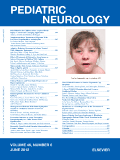
PEDIATRIC NEUROLOGY
Illuminating Pathways in Child Neurology ResearchPediatric Neurology, a prestigious journal published by Elsevier Science Inc, is a leading resource in the field of child neurology and developmental neurosciences. With an impressive impact factor and categorization in the Q1 and Q2 quartiles across several relevant fields, including Pediatrics, Neurology, and Developmental Neuroscience, this journal is essential for researchers and healthcare professionals focused on pediatric neurological disorders. Since its inception in 1985, it has provided a platform for high-quality research, clinical studies, and reviews that drive advancements in diagnosis, treatment, and understanding of neurological conditions in children. Although the journal does not currently offer open access, it maintains a robust reputation in the academic community, bolstered by its prominent ranking in Scopus metrics. By engaging with the latest findings published in Pediatric Neurology, readers will gain vital insights that contribute to improving pediatric healthcare outcomes in neurology and neuroscience.

REVISTA DE NEUROLOGIA
Exploring the Frontiers of Neurology and MedicineREVISTA DE NEUROLOGIA is a distinguished academic journal focusing on the broad fields of neurology and medicine, published in Spain since its inception in 1959. The journal plays a vital role in disseminating significant research findings, clinical studies, and advancements in neurological science, catering to an audience of researchers, clinicians, and students alike. With an ISSN of 0210-0010 and an E-ISSN of 1576-6578, this quarterly publication has maintained its commitment to enhancing the understanding of neurological disorders and therapies through rigorous peer-reviewed articles. While currently not classified as open access, it is indexed in Scopus, holding a rank of #253 out of 400 in the category of Medicine (Neurology), reflecting its relevance in the field with a 36th percentile. The journal is positioned within the Q3 quartile for both Medicine (miscellaneous) and Clinical Neurology categories as of 2023. Based in Barcelona, Spain, it is a vital resource for anyone devoted to the advancement of knowledge and practice in neurology.
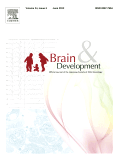
BRAIN & DEVELOPMENT
Connecting Science and Practice in Pediatric NeuroscienceBRAIN & DEVELOPMENT is a prestigious academic journal published by ELSEVIER, renowned for its pivotal contributions to the fields of developmental neuroscience, neurology, and pediatrics. Established in 1979, this journal has become an essential resource for researchers and clinicians alike, as it explores the complexities of brain development and associated neurological disorders in children. With an impactful focus on advancing scientific understanding, BRAIN & DEVELOPMENT is currently ranked in the Q3 quartile in Developmental Neuroscience and Clinical Neurology and Q2 in Pediatrics, reflecting its significance within the medical community. Its ISSN 0387-7604 and E-ISSN 1872-7131 underline its established presence in academic literature. While the journal does not offer open access options, it continues to be a key platform for disseminating new research findings and fostering innovation in the understanding of pediatric neurological health. The journal's commitment to quality research is further evidenced by its ongoing publication trajectory up until 2024, making it a vital source of knowledge for students, professionals, and educators in related fields.
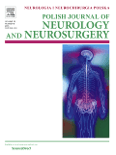
Neurologia i Neurochirurgia Polska
Innovating Solutions for Neurological ChallengesNeurologia i Neurochirurgia Polska is a prestigious Polish journal dedicated to advancements in the fields of neurology and neurosurgery, published by VIA MEDICA. With a rich history dating back to 1967, this journal serves as a critical platform for disseminating significant research findings and clinical practices that advance our understanding of neurological disorders and surgical interventions. Registered under ISSN 0028-3843 and E-ISSN 1897-4260, it boasts commendable rankings as reflected in its 2023 categorical quartiles: Q3 in Neurology (Clinical) and Q2 in Surgery, indicating its substantial impact within these domains. Furthermore, its Scopus rankings reveal that it is positioned at Rank #125/551 within Medicine-Surgery and Rank #187/400 in Medicine-Neurology (Clinical), showcasing its importance in academic and clinical circles. Although not currently open access, the journal remains accessible to readers and practitioners who seek to stay updated on innovative research and methodologies. The journal’s objective is to foster knowledge exchange and stimulate scientific dialogue among researchers, professionals, and students, thus shaping the future of neurology and neurosurgery in Poland and beyond. Located at UL SWIETOKRZYSKA 73, 80-180 GDANSK, POLAND, it invites contributions that inspire and elevate the standards of medical practice.

Journal of the Korean Academy of Child and Adolescent Psychiatry
Elevating discourse on child and adolescent psychiatry.The Journal of the Korean Academy of Child and Adolescent Psychiatry (ISSN: 1225-729X; E-ISSN: 2233-9183) stands as a pivotal resource in the fields of child and adolescent mental health, contributing significantly to the dialogue on psychiatric practices and research in South Korea and beyond. Published by the KOREAN ACADEMY OF CHILD & ADOLESCENT PSYCHIATRY, this journal is recognized for its dedication to advancing the understanding of psychiatric disorders that affect children and adolescents, as evidenced by its Q3 ranking in both Pediatrics, Perinatology and Child Health and Psychiatry and Mental Health categories for 2023. Operated from Seoul, South Korea, the journal facilitates knowledge-sharing among researchers and practitioners, providing insights into clinical practices and innovative treatment methodologies. Although not openly accessible, the journal emphasizes quality over quantity in its selection of studies, making each article a valuable contribution to the field. As the journal continues to publish impactful research through 2024, it remains essential reading for those committed to the well-being of younger populations and their families.
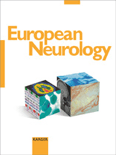
EUROPEAN NEUROLOGY
Cultivating a Legacy of Neurological ExcellenceEuropean Neurology, published by KARGER, is a distinguished journal in the field of neurology, catering to both clinical and neuroscience specialties. Since its inception in 1897 and continuing through 2024, the journal has been a vital platform for disseminating significant research findings and insights in neurology. With an ISSN of 0014-3022 and E-ISSN of 1421-9913, it ranks in the Q3 quartile in both clinical neurology and general neurology categories, reflecting its commitment to scholarly excellence while holding the 175th rank in clinical medicine and the 93rd in neuroscience, according to Scopus metrics. European Neurology facilitates a deeper understanding of neurological disorders and treatments, appealing to a diverse readership that includes researchers, clinicians, and students alike. Despite not currently offering open access, the journal’s rigorous peer-review process ensures that only high-quality research reaches its audience, making it an essential resource for those looking to stay informed in the rapidly evolving field of neurology.